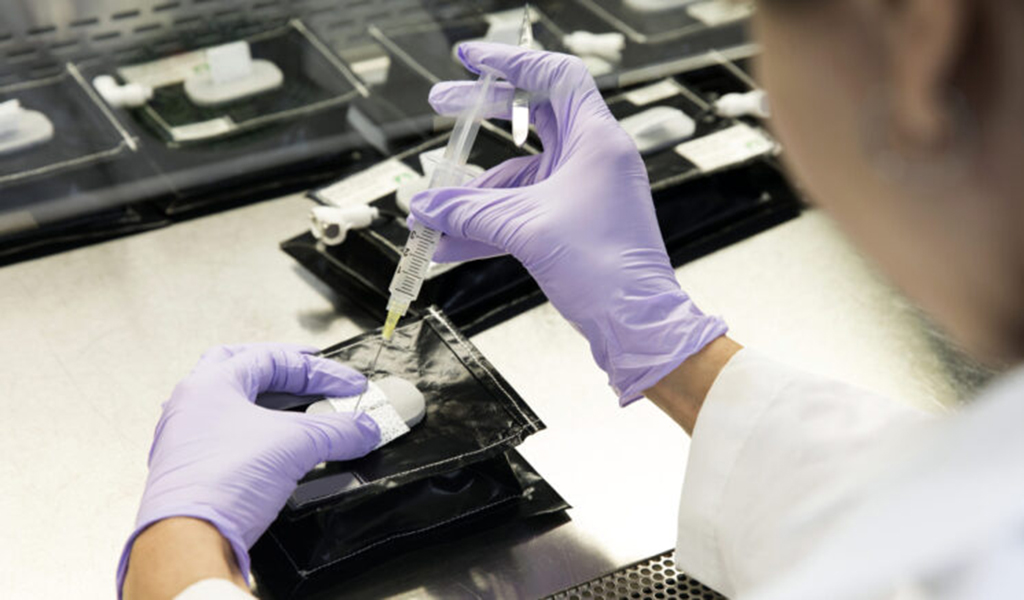Introduction to Is Water Wet
Is water wet? The answer to this question requires some philosophical reflection and depends on how you define moisture. The debate about whether Is water wet or not will most likely continue as long as the planet is flooded with the substance. This article explores clinical and philosophical views on the nature of dampness and the water that courts it.
Defining humidity of Is Water Wet?
Moisture is a concept that seems credible at first but becomes more complicated upon closer inspection. In general, moisture is defined as a situation where a liquid is contained or saturated with liquid. However, this definition opens the door to different interpretations, especially when applied to water.
Scientific view
In scientific terms, moisture refers to the ability of a liquid to adhere to a solid floor. When a liquid such as water comes into contact with a solid, the cohesive forces in the liquid and the adhesive forces between the liquid and the solid cause wetting. So, scientifically speaking, water makes things moist, but it is not itself moist.
Surface tension and wetting
Surface anxiety plays an important role in the method of wetting. It is the elastic tendency of the liquid bottom that makes it acquire the least viable place on the surface. Surface anxiety causes water droplets to shape and affects how water wet interacts with different surfaces.
The role of cohesion and adhesion
Cohesion refers back to the fascination between molecules of an identical substance, at the same time as adhesion refers to the fascination between molecules of different substances. Wetting occurs when the adhesive forces between the water molecules and the surface are strong enough to overcome the cohesive forces within the water molecules.
Philosophical considerations
Philosophically, the question of whether Is water wet depends on the definitions and frameworks we use to understand the world. If moisture is described as the presence of a liquid, then Is water wet which is a liquid, is naturally moist. This position is challenging to the scientific view and invites a broader interpretation.
Everyday language and intuition
In normal language, people regularly describe Is water wet. This intuitive information displays a broader, less technical definition of wetness, in which any contact with a liquid is considered wet. This common usage contrasts with more precise clinical definitions.
A wet experience
Moisture is also a sensual pleasure. When we come into contact with Is water wet, we experience a sensation that we describe as wetness. This tactile belief adds each layer to the dispute because it suggests that the water causing this sensation is probably inherently wet.
Moisture in different contexts
Our knowledge of humidity can affect different contexts. For example, in engineering and textile technological know-how, the properties of wetting are decisive for the cultivation of coatings and adhesives. In these areas, proper scientific definitions of moisture are vital to realistic programs.
The importance of context
Contextual topics when discussing whether Is water wet or not. The definitions and frameworks we use may trade depending on whether we are discussing routine studies, clinical standards, or philosophical ideas. Recognizing these connections helps clarify the discussion.
Moisture and hydrophilic surfaces
Hydrophilic surfaces attract water, causing it to spread and wet the floor. These surfaces have a high floor energy that facilitates the adhesion of Is water wet molecules. Understanding hydrophilic interactions helps to explain why some materials wet more easily than others.
Hydrophobic surfaces and water repellency
Conversely, hydrophobic surfaces repel water, which causes it to curl and roll off. These surfaces have a low floor electricity, which makes them resistant to wetting. Studying hydrophobic interactions provides insight into designing materials that remain dry even when in contact with water.
Biological consequences of humidity
In biology, moisture affects processes such as cell adhesion and fluid conduction within organisms. Understanding how water interacts with biological surfaces is critical to fields such as remediation and environmental science.
Moisture in nature
Moisture is a natural phenomenon that occupies a fundamental position in ecosystems. Rain wets the soil, helps plants flourish, and sustains lifestyles. Rivers and lakes offer wet habitats for a variety of species. Moisture is important for the stability of natural systems.
Practical implications
The practical implications of humidity extend into everyday life. From cleaning and cooking to outdoor sports, our moisture know-how affects how we interact with Is water wet, and various beverages. This realistic information is rooted in both clinical concepts and everyday experience.
An ongoing debate
The debate over whether Is water wet continues to take hold of the hobby. Diverse perspectives contribute to a vigorous dialogue that includes medical inquiry, philosophical inquiry, and normal experience. This ongoing debate shows the richness of the inquiry.
Bridging different perspectives
Bridging the gap between scientific and philosophical views on moisture can result in more complete information. By recognizing the validity of different definitions and contexts, we recognize the complexity of the concept.
The role of definitions
Definitions play an important role in the debate. Precise medical definitions help us recognize unique phenomena, while broader and more intuitive definitions use normal studies. Both kinds of definitions are valuable for a single purpose.
Curiosity and inquiry
Curiosity approximately questions like “Is water wet?” directs scientific and philosophical research. This curiosity leads to deeper exploration and knowledge, emphasizing the importance of asking questions and finding solutions.
The impact of technology
Advances in technology continue to shape our understanding of moisture. New materials and strategies enable better handling and wetting properties, with packages ranging from business techniques to consumer goods.
The role of language
Language plays a key role in shaping our knowledge of moisture. Words convey connotations and meanings that can vary widely depending on cultural, academic, and personal context. Examining how specific languages and cultures describe and interpret moisture can offer additional layers of insight into this multifaceted inquiry.
The importance of accuracy
While everyday language is often inclusive, scientific language requires precision. Scientists want clean, unique definitions for conducting experiments, examining data, and communicating findings. The difference between these two forms of language highlights the need for careful attention when discussing scientific ideas in ordinary contexts.
Philosophical implications
The philosophical implications of the humidity debate extend beyond water. This dialogue touches on broader questions about the nature of residences, the definitions we use to describe the world, and how we understand and categorize our stories. It encourages us to look more deeply at how we outline and recognize the essential components of reality.
Real-world applications
Understanding humidity has sensible packages in different industries. For example, within the subject of materials science, growing surfaces with precise humectants can lead to improvements in waterproof clothing, self-cleaning surfaces, and scientific equipment. These packages reveal the tangible blessings of moisture standards research and know-how.
The future of moisture research
As technology advances, our ability to observe and control damp homes will continue to grow. Additionally, future research may uncover new insights into how beverages interact with surfaces, leading to even more advanced packaging and technologies. A continued look at moisture may bring exciting developments in several areas.
Encouraging curiosity
The question “Is water wet” will appear in the middle. promotes curiosity and wonder. It challenges us to take a particularly focused look at ordinary phenomena that we often take for granted and to seek deeper know-how. This curiosity-fueled technique is essential for medical research and philosophical inquiry.
The journey of knowledge
The debate over whether Is water wet serves as a reminder that even simple questions can lead to profound discoveries. It is an example of a system of inquiry where asking questions, exploring answers, and thinking about different perspectives can lead to more information and know-how.
Further investigation of surface tension
Surface anxiety is a fascinating phenomenon that greatly affects how we understand moisture. It arises because the molecules at the bottom of the liquid have special forces than the molecules inside the liquid. This difference makes the floor act like an elastic sail, and therefore the drops of water bureaucracy prefer to spread to infinity.
Surface energy and contact angles
Surface force is a critical factor in determining how a liquid interacts with the floor. High surface strength fabrics tend to absorb beverages, resulting in small contact angles and excellent wetting. On the contrary, substances with a low energy level repel drinks, increase high contact angles, and poor wetting. This treatment is central to many industrial applications that include coating technology and floor treatments.
The role of intermolecular forces
Intermolecular forces, including hydrogen bonds, van der Waals forces, and ionic interactions, play a fundamental role in wetting behavior. These forces determine how strongly water molecules are attracted to each other and different surfaces. Understanding these interactions makes it possible to explain why some materials are certainly hydrophobic or hydrophilic.
Wetting phenomena in everyday life
Moisture phenomena are ubiquitous in everyday life. From the way rainwater drips onto a freshly waxed car to the way water spreads across the surface of a jug, these interactions are a direct result of thoughts of wetness and surface anxiety. Observing these everyday examples can deepen our appreciation of the technological know-how behind them.
Capillary action and moistening
Capillary action is another phenomenon closely related to humidity. This occurs when a liquid moves down a narrow tube or through porous substances due to adhesive forces between the liquid and solid surfaces. This technique is crucial in many biological and environmental structures, such as water transport in plants and soil moisture movement.
Superhydrophobic surfaces
Superhydrophobic surfaces exhibit extreme water repellency, with contact angles exceeding one hundred and fifty degrees. These surfaces mimic herbal phenomena just like a lotus leaf, where water droplets roll off, picking up dust and dirt along the way. These properties are used for self-cleaning materials and waterproof coatings.
Wetting in industrial processes
In many business approaches, control of damp houses is key. For example, in the printing industry, the interaction between ink and paper depends on the wetting behaviour of the ink. Similarly, in manufacturing, adhesives, and lubricants should wet surfaces well to perform their functions successfully.
CONCLUSION
As we try to unravel the question of whether Is water wet or not, we adopt a path of discovery and investigation. This question, while seemingly simple, opens the door to a vast and fascinating exploration of technology, philosophy, and common experience. It encourages us to be serious, to appreciate exceptional views, and to have fun with the complexities of the sector around us.





